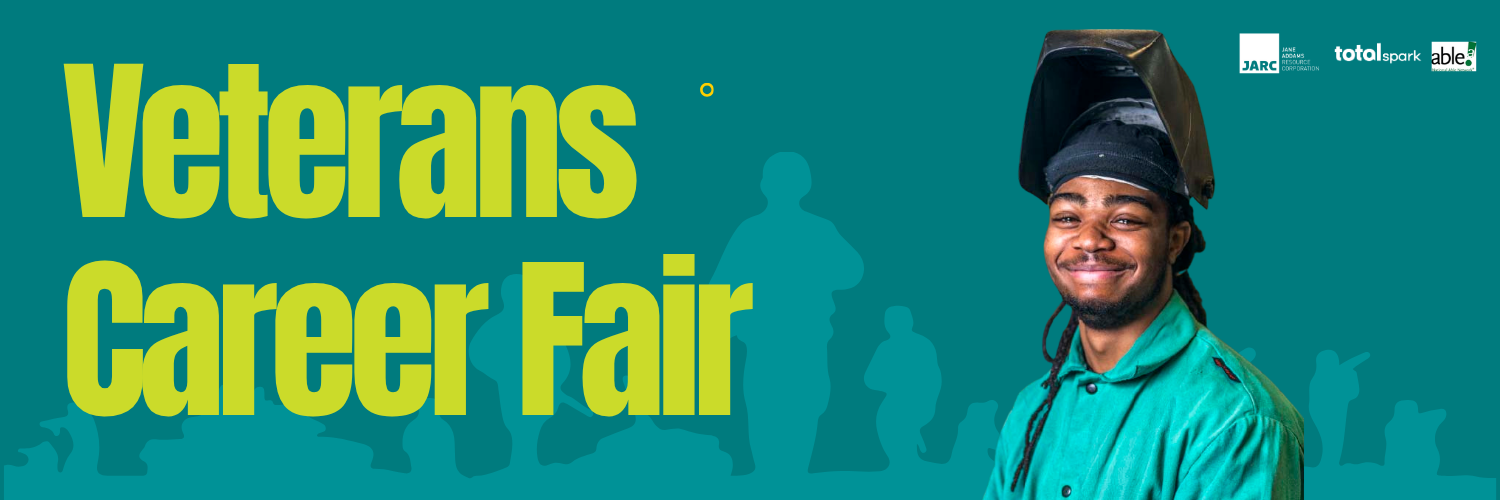



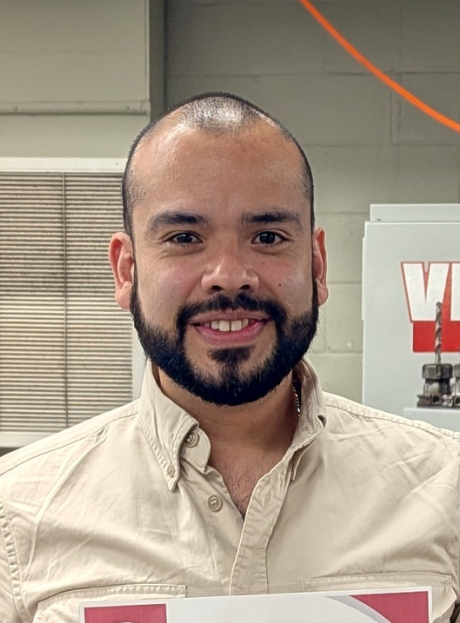
When Felipe first arrived in the United States, he worked in restaurants, starting as a dishwasher and gradually moving up to become a general manager. “When I got here, I started as a washer, and I moved up, moved up until I became a general manager,” he recalls. While he valued the skills and English he gained in the restaurant industry, Felipe realized he had reached a plateau. “Being a general manager, I felt stuck. I knew, there would come a point where I’d feel stuck. And that’s what happened. I was like, I’m a general manager, I don’t want to take the next step, but I also don’t see myself as a regional manager at 30 years old.”
”“The part I liked most was job development, practicing interviews. That, plus soft skills sessions, was excellent. I’d never done job interviews before. This prepared me well.”
FelipeCNC Graduate, JARC Baltimore
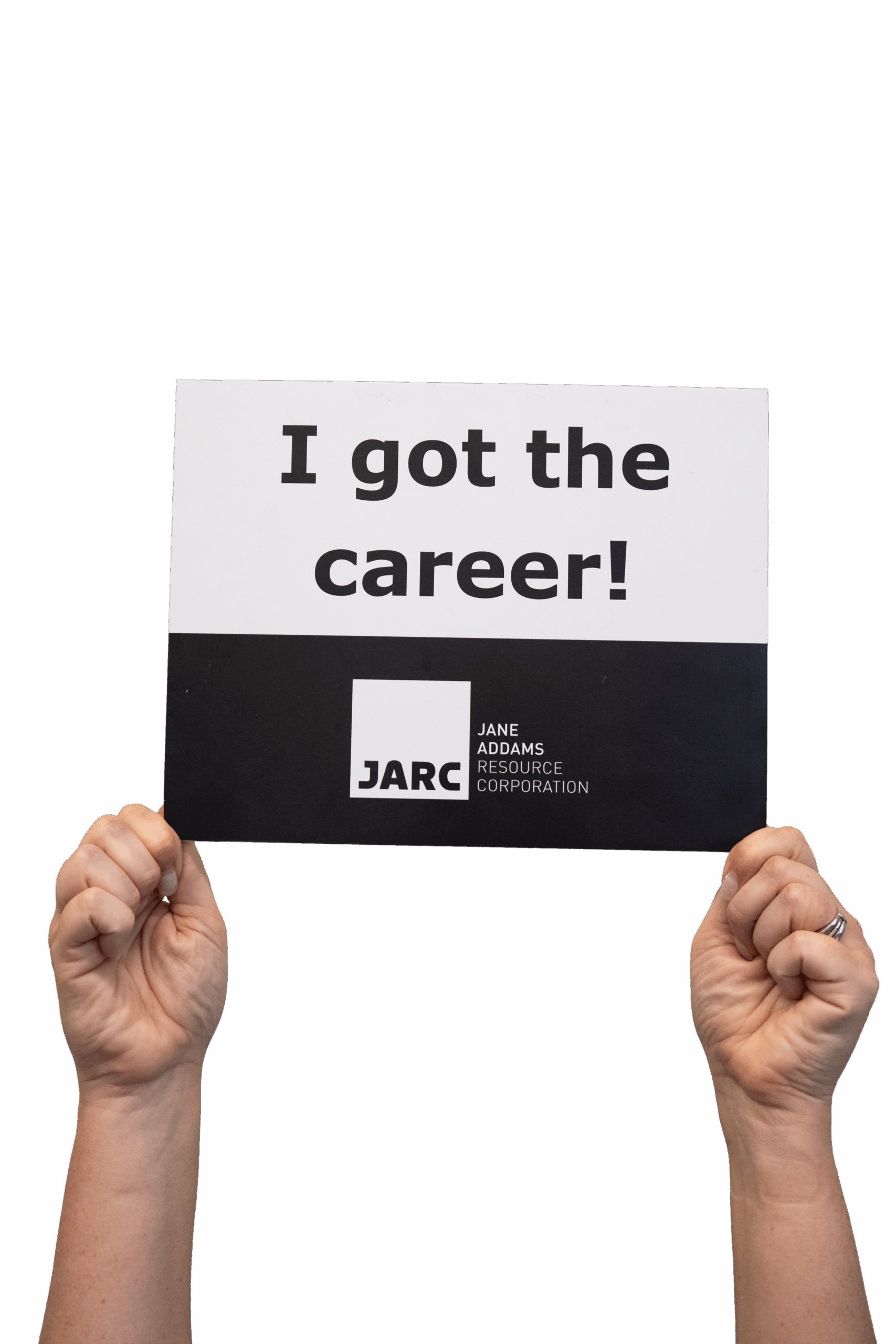
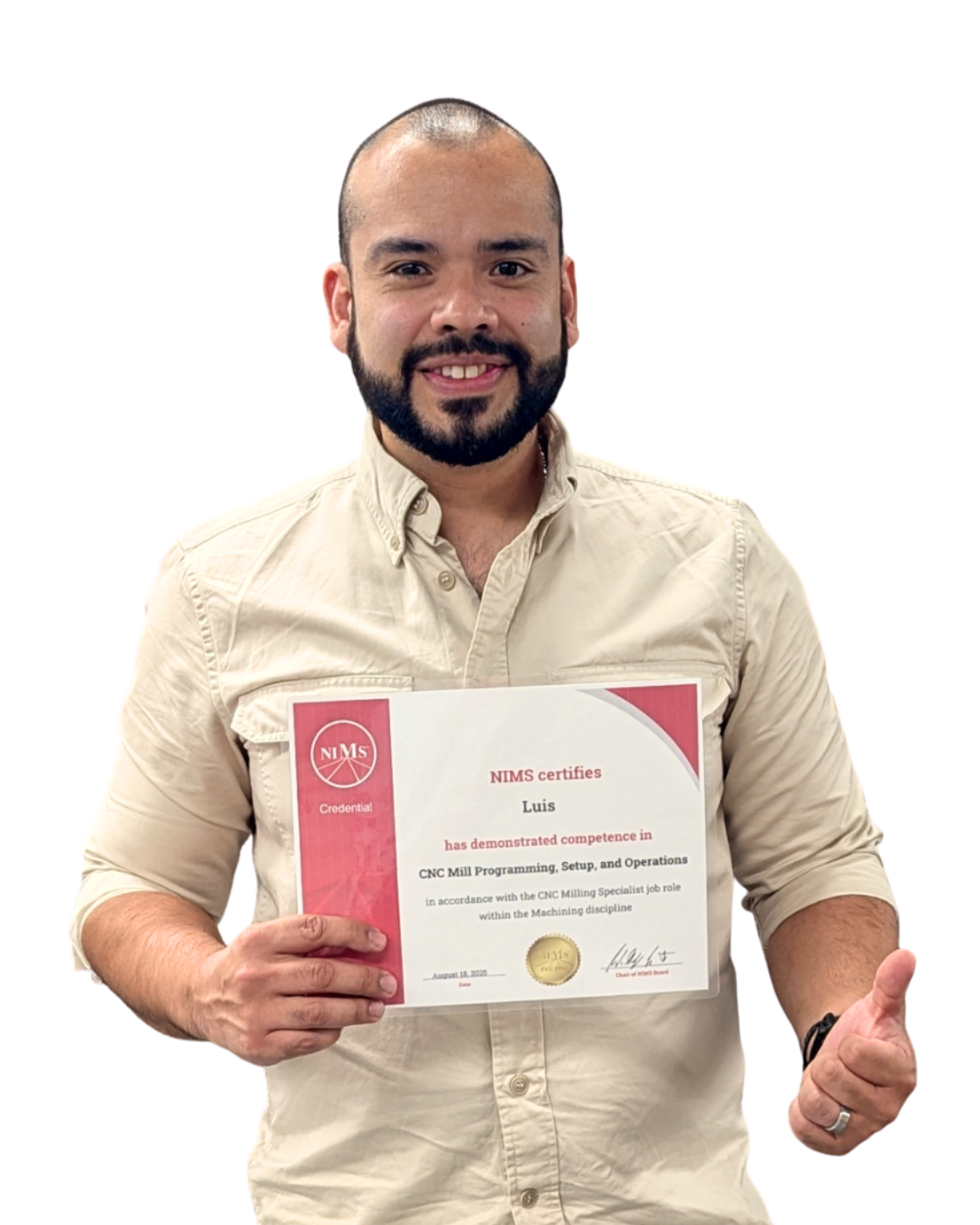
Looking for a change, Felipe explored opportunities that aligned with his background in mechanical engineering, which he studied for three years in Venezuela. He discovered JARC Baltimore’s CNC training program and immediately saw a path to a career that truly interested him. “When I saw this CNC program, I had the opportunity before to have a lab class back in Venezuela. It was called metallurgy, working with lathes, presses, and all that; but all manually, nothing automated.” Felipe was drawn to the computerized nature of the program and the chance to develop technical skills that would translate into a stable, fulfilling career.
Learning to operate the CNC machines and programming codes was difficult at first, but he found effective ways to master the curriculum. “What I did was record a video of the instructor explaining each step, then at home I made notes. Step one was this, step two was that. The next day, I followed all steps and told the instructor I was ready to operate the machine. That helped a lot. That was the hardest part.” He also received crucial support from JARC, including gas cards and financial assistance to repair his vehicle, allowing him to focus on completing the program. While in the program, Felipe received two financial coaching sessions, one employment session, and one income support counselling session. He also attended three financial workshops, where he learned practical skills like budgeting and money management.
Felipe’s experience at JARC went beyond technical skills. Job development sessions, mock interviews, and soft skills training prepared him for the professional world. “The part I liked most was job development, practicing interviews. That, plus soft skills sessions, was excellent. I’d never done job interviews before. This prepared me well.” These experiences, combined with the guidance of instructors and staff, positioned him for success in manufacturing.
Today, Felipe is thriving in his new career as a CNC Machine Operator at Pace Worldwide. The stability and satisfaction of this role have transformed his life and opened doors for future growth. “If they want a career change and are interested in manufacturing, this is the place. The support team is great, and the program gives you freedom to succeed. It opens doors to new careers.” Reflecting on his journey, Felipe calls his experience at JARC Baltimore a true stepping stone: “It [JARC] opens doors and prepares you for success in a new career. The first door in manufacturing; after that, many doors open.” Thanks to JARC Baltimore, Felipe has transitioned from uncertainty to a career he enjoys, a testament to the power of dedicated training, supportive staff, and a clear path to opportunity.
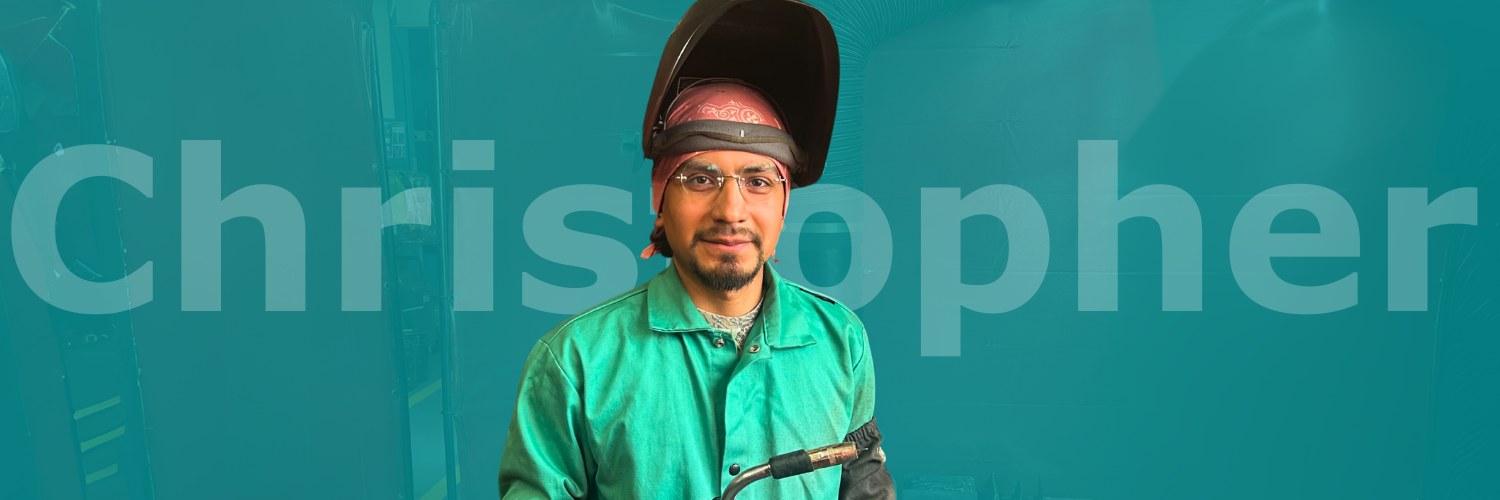

Before Christopher joined Jane Addams Resource Corporation (JARC), his life was a mix of creativity and frustration. With a BFA in Illustration, art was always at the heart of his identity. He worked as an apparel designer and later as a product development designer, cleaning up digital art files for overseas production.
He also poured his passion into freelance projects, painting basketball courts and collaborating with friends, but something vital was missing. “I never felt fulfilled,” Christopher reflects. “Since the day I started that job, I was applying for other roles, chasing that feeling I had back in art school. I felt stuck. I was comfortable, and once you’re comfortable, you stop growing.”
Determined to find new purpose, Christopher searched for free welding programs near him and found JARC. What began as a simple Google search turned into a pivotal life decision. “Welding felt like a whole different animal, but at the same time, it has similarities to art,” he says. Since enrolling in JARC’s Welding Program at the Austin location in February, Christopher has embraced the structure, intensity, and community that comes with it. He’s working toward his certification and admits that it hasn’t all been easy.
Christopher also highlights the support JARC provides beyond technical training. He receives transportation assistance and participates in weekly financial coaching with Britt. “She teaches us about financial literacy and the options we didn’t even know we had,” he explains. So far, Christopher has completed 5 employment coaching sessions and 6 financial coaching sessions and has also received income support. He’s attended two additional workshops on investing and digital literacy, resources that are helping him build a stronger foundation for his future.
As for what’s next, Christopher dreams of homeownership and financial independence. “[My goals] are very simple,” he admits, “but they feel impossible to achieve at the moment.” Still, he remains focused: “I’m hoping to become a homeowner, have things for myself, live comfortably, gain a little financial freedom, just build something for myself.” At JARC, Christopher has found not just a new skill, but a path forward. And as he continues to weld, design, and grow, one thing is clear: his story is just getting started.
Every shirt sold helps us provide free training and wraparound support services for people like Grace, ensuring that hardworking individuals don’t have to live in poverty.
This initiative is proudly organized by JARC’s Associate Board.
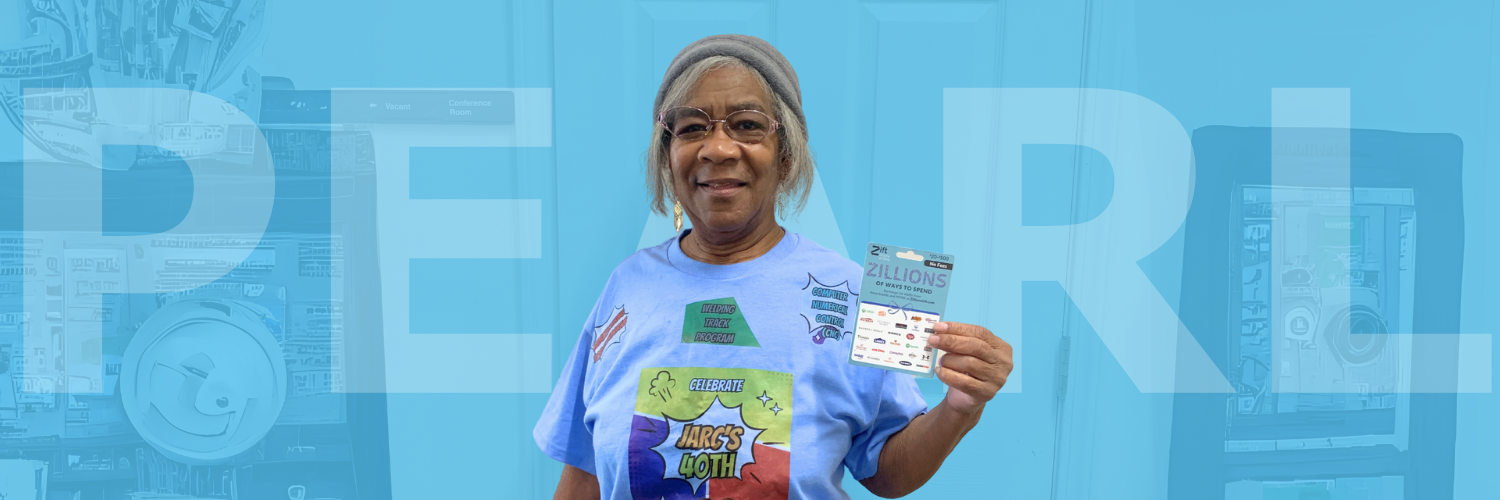

When Pearl first heard about Jane Addams Resource Corporation (JARC), it wasn’t through a flyer or a website, it was a personal visit. “Somebody came from over there to my job,” she recalls. At the time, Pearl was working at Boye Needle Company near Montrose and Ravenswood. Back in the late ‘80s or early ‘90s, Pearl and a few coworkers attended a computer introduction class at JARC.
“We had Microsoft Word Core 2000, Microsoft PowerPoint and Excel, JARC showed us how to do a lot of stuff.” When her job later moved operations to Massachusetts, Pearl relocated temporarily. But when she returned to Chicago in 2003, she found JARC still standing and still teaching. She didn’t hesitate to dive back in.
In 2003, Pearl enrolled in JARC’s Computer Numerical Control (CNC) program. Her passion for learning didn’t stop there, she went on to take additional classes in Access, Internet and Outlook, as well as intermediate Word and Excel by 2007. “They had a good graduation for us,” she recalled. “They gave us those little papers and everything. It was nice. I loved it.”
Though she’s now retired, the skills Pearl gained at JARC opened doors for her throughout her career. She held roles in warehouses, assembly lines, and CNC jobs, and even landed a position at Walgreens. “I wasn’t qualified with the computer before,” she said, “but it helped me with the machines they had”. Before long, Pearl found herself training others. “I was like, wow, I’m training people!”
In 2025, she entered the organization’s T-shirt design contest and won. Her entry captured the full scope of JARC’s impact.
“I tried to put everything that I knew that JARC did. My niece helped me put the design on the shirt. I was looking at pictures of people working on computers and machines, it was so helpful.”
When asked to sum up what JARC has meant to her, Pearl doesn’t hesitate: “JARC is the best place to go, and it’s free. You can learn for free.” She continues to advocate for young people to take advantage of the opportunity: “I tell them to go, especially young people. If they’re looking for a job, it helps.”
Pearl’s story is one of resilience, creativity, and the power of accessible education. From mastering CNC machines to designing winning T-shirts, she exemplifies the spirit of lifelong learning that JARC fosters in every trainee who walks through its doors.
Every shirt sold helps us provide free training and wraparound support services for people like Grace, ensuring that hardworking individuals don’t have to live in poverty.
This initiative is proudly organized by JARC’s Associate Board.
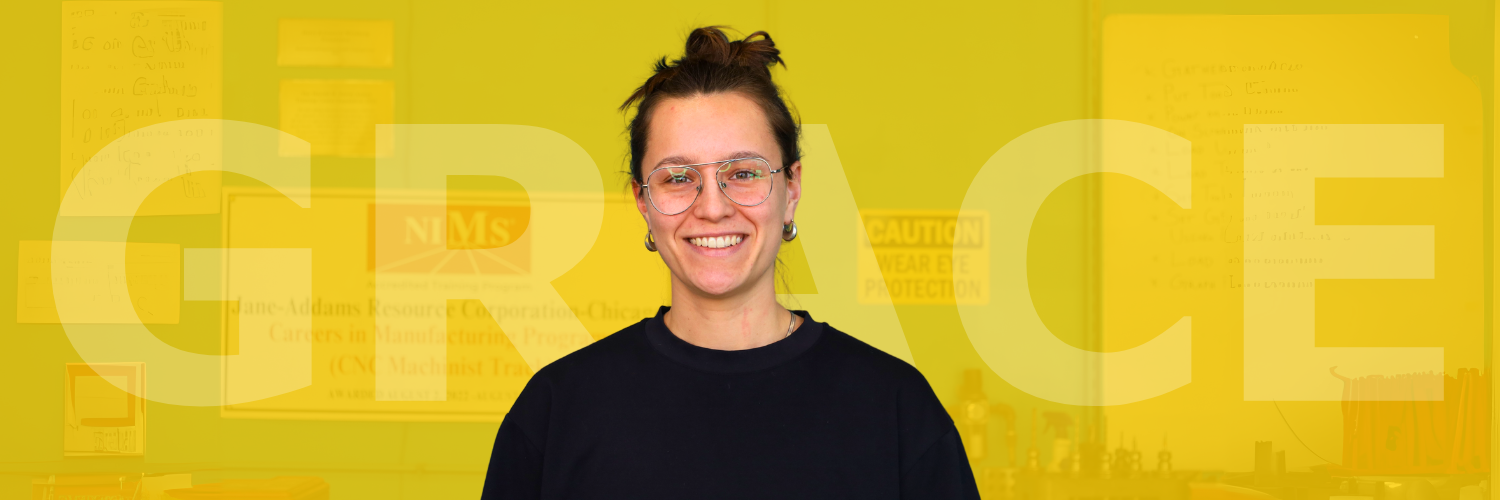

Before Grace discovered Jane Addams Resource Corporation (JARC), she had spent years working in warehouses in Portland, Oregon. She didn’t mind the work, but she felt stuck. “There just wasn’t a lot of mobility,” she said. When she relocated to Chicago, she made herself a promise: no more jobs without a pathway forward. She was ready to level up.
That promise led her to JARC’s CNC machining program, something she hadn’t even heard of before. “Once I learned what CNC machining was, I thought, this seems great. There are so many directions you can take it in.”
Walking into JARC, Grace found more than just a new career path. She found a community of encouragement and practical tools that helped her thrive. “Everyone is just so welcoming right away. Start to finish, it’s a lot of great people and so much support. It’s really unlike anything I’ve been a part of before.”
The road wasn’t without challenges. But JARC met them head-on, providing critical support services like transportation assistance, new work boots, and prescription safety glasses. “They really think outside the box and meet people where they’re at,” Grace shared. That kind of support made it possible for her to focus on building real skills. While in training, Grace received personalized support to help her succeed beyond the classroom. She had 9 one-on-one employment coaching sessions and attended 16 workshops on budgeting, digital literacy, and financial management. She also took part in 3 sessions focused on income support and financial coaching, giving her the tools to plan for a more stable future.
Grace earned three industry-recognized certifications, gained hands-on experience with machining equipment, and even won JARC’s T-shirt fundraising contest with a custom design she created using 3D software. “It was a cool opportunity to learn something new.”
JARC staff were right there with her, even accompanying her on a tour of the company where she now works. That support gave her the confidence and connection she needed to make a strong impression. “I definitely couldn’t have done that without JARC,” she said. “If I can do it, anyone can do it.”
Her message to others? “Just try it. You’ll probably end up surprising yourself with what you’re capable of.”
Every shirt sold helps us provide free training and wraparound support services for people like Grace, ensuring that hardworking individuals don’t have to live in poverty.
This initiative is proudly organized by JARC’s Associate Board.
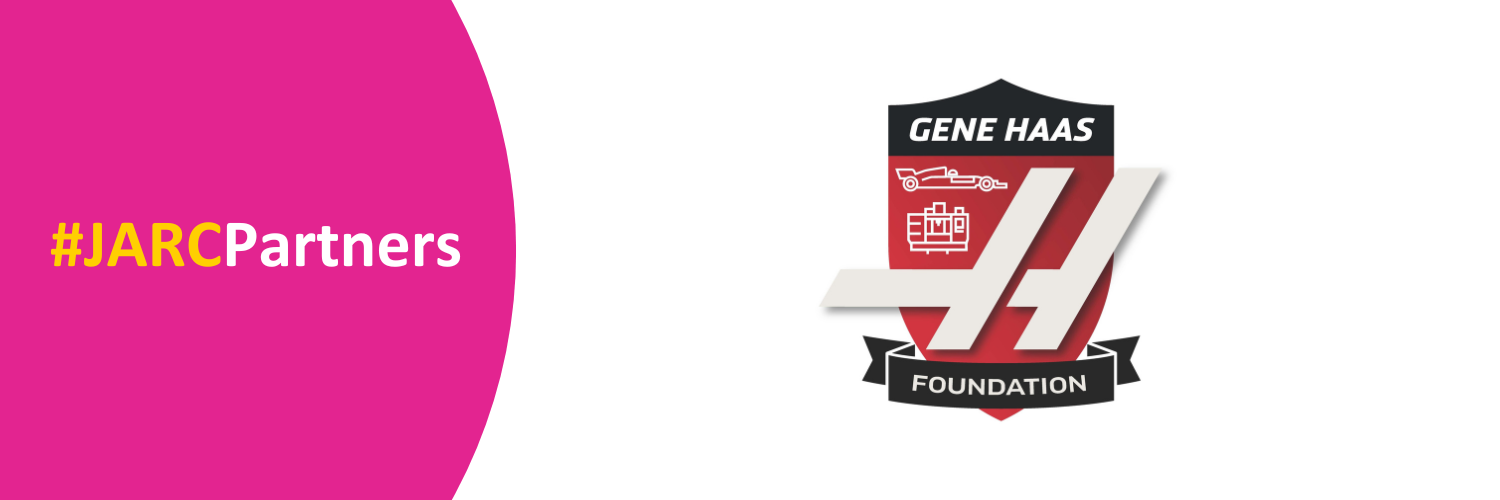

Omniseal Solutions’ Bristol, Rhode Island facility experienced a significant resurgence between 2021 and 2023, tripling both production and headcount. With operations focused on performance plastics and precision components for space and aviation, the engineering and manufacturing company needed a fast and reliable way to build a skilled workforce. This became especially urgent after business that had previously been sent overseas was brought back to the site.
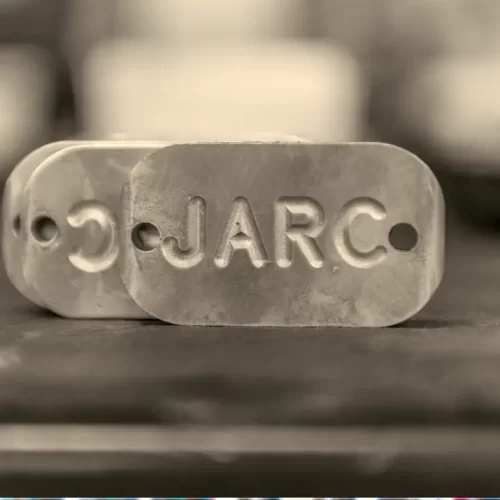
Polaris MEP, the Rhode Island Manufacturing Extension Partnership, facilitated a connection between Omniseal Solutions and the Jane Addams Resource Corporation (JARC). JARC Rhode Island, established in 2022, had already built a reputation for designing and delivering high-impact career path training for job seekers in CNC machining and welding. JARC has been delivering high quality, employer informed manufacturing skills training in Chicago and Baltimore since 1985 and 2015, respectively.
In addition to training targeted to job seekers, JARC delivers firm-side training utilizing a customized approach built around employer needs, with the goal of upskilling workers and supporting employers to create career mobility opportunities for their workers.
”“Working with JARC to design custom training solutions for our evolving business needs has been simple and effective.”
Sebastian MooreOmniseal HR Manager

”“This investment in our employees drives higher performance and retention, leading to stronger business outcomes.”
Sebastian MooreOmniseal HR Manager
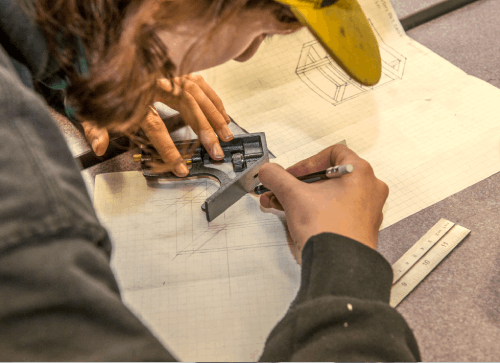
Omniseal Solutions’ Bristol site required talent with highly specific skills. A previous partnership with a local community college had not aligned with the company’s day-to-day operational needs. They needed a training model that was flexible, employer-led, and capable of producing consistent results across both technical and non-machine-facing roles.
The facility’s involvement with Controlled Unclassified Information (CUI) further narrowed hiring and training options, adding another layer of complexity. With rapid growth and new business coming in, the company had to ensure that new employees were not just hired quickly but also equipped with the right skills and knowledge to contribute immediately.
To ensure the training would meet Omniseal Solutions’ specific operational needs, JARC staff, including Guy Loudon and John Tebow, worked closely with the company to design the curriculum. This included conducting preliminary worker assessments and employee surveys to tailor the training content. Regular meetings between JARC and Omniseal Solutions’ Bristol leadership helped fine-tune course materials and align the program with the skills required on the plant floor.
Unlike off-the-shelf programs, JARC built a solution in direct collaboration with Omniseal Solutions; it was designed to align with the company’s specific training requirements and hiring goals. The program supported both new hires and incumbent workers and connected to the company’s internal second chance hiring initiative. Together, the partners created a pipeline of talent that matched the demands of the work while offering meaningful career pathways.
According to Moore, JARC brought something different to the table. He noted that “they really do honor those partnerships. They do a good job of keeping us all informed and involved, and I know I have a sounding board with this team.”
The partnership has helped Omniseal Solutions scale its workforce responsibly and with confidence. Dozens of employees have completed JARC-supported training, creating a stronger, more consistent baseline of technical knowledge across the workforce. Moore explained that “our employees definitely all have a similar baseline level of knowledge, which is critical. It gives us a starting point to jump off from.”
To date, 65 Omniseal Solutions’ employees have successfully completed JARC’s training. These customized training courses included:
Another success of the program was that 9 employees received raises or promotions after completing JARC classes. Managers have gained more confidence in their teams, while employees are advancing into more complex roles faster. One graduate of JARC’s CNC Fast Track program joined as a new hire machinist and within 18 months was operating some of the facility’s most advanced machines.
The success of the partnership offers a model for other manufacturers looking to address talent gaps. Moore believes that as technology and AI accelerate changes on the factory floor, partnerships like this will only become more important: “Creating and advancing partnerships with workforce development agencies is a business imperative.”
When asked what he would say to another company considering a similar partnership, his advice was simple: “Stop thinking and do it. Just have the conversation.”

Call4Calm – FREE emotional support text line
Text “TALK” to 552020 or “HABLAR” for service in Spanish
Additional Crisis Support Resources:
National Suicide Prevention Hotline: 800-273-TALK (8255)
Crisis Text Line: Text “HOME” to 741741
Depression & Bipolar Support Alliance Hotline: 800-826-3632
National Drug & Alcohol Treatment Hotline (SAMHSA): 1-800-662-HELP (4357)
National Domestic Violence Hotline: 800-799-7233
TrevorLifeline (LGBTQ Crisis Hotline): 1-866-488-7386
Trans Crisis Hotline: 877-565-8860

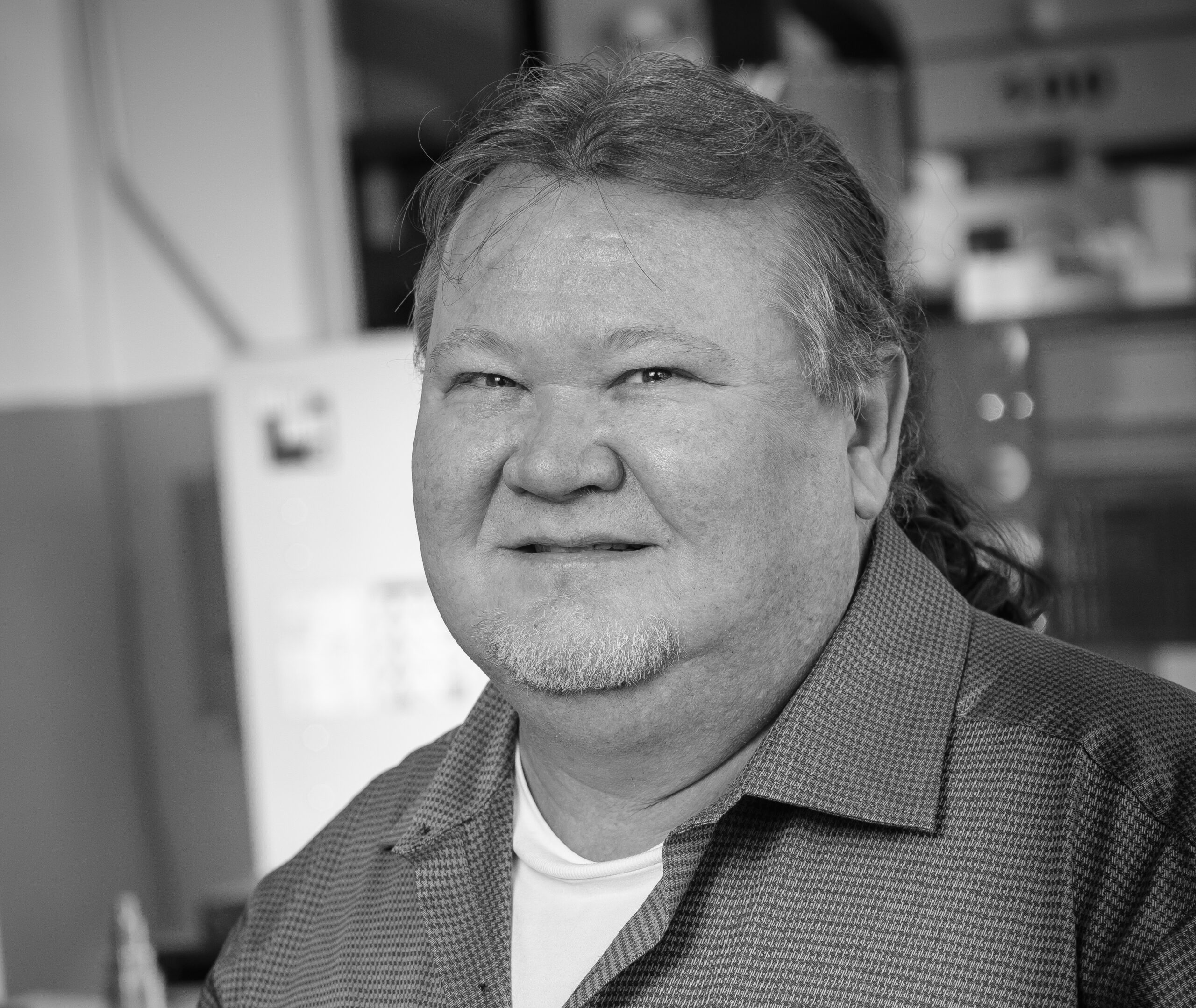
At Jane Addams Resource Corporation (JARC), we believe in the power of people, those we serve and those who help us serve better. This June, we are proud to announce the launch of the JD Lipa Fund, a new initiative dedicated to supporting veterans enrolled in our Careers in Manufacturing Programs (CMP).
This special fund honors the memory and legacy of our beloved colleague and friend, JD Lipa, whose unwavering dedication to JARC’s mission helped shape our training programs and strengthen our commitment to equity and community.
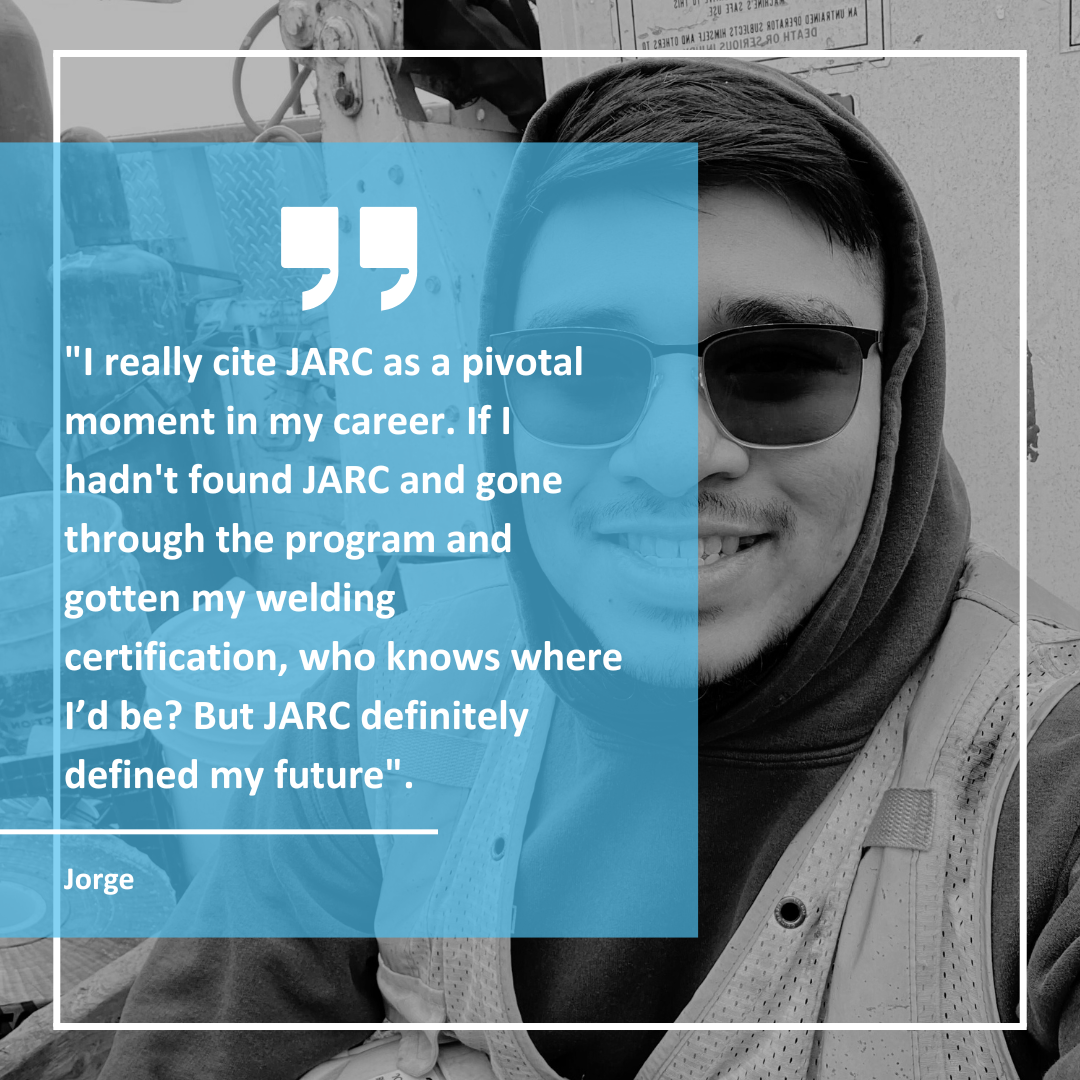
Jorge started in the military in 2014, and after three years of service, he was ready to get back home and find a new job. Jorge mentioned that his favorite part of the Welding program was having a schedule. He said that the lack of structure was something that affected him when he was back from military service, but JARC really helped him get back to being goal-oriented.
Since JD’s passing, we’ve taken time to grieve and reflect on just how much he meant to the JARC family. From his early days as an industry partner in 2002 to becoming JARC’s Director of Manufacturing Operations in 2016, JD was a driving force behind our growth, ensuring our programs remained industry-relevant, employer-driven, and deeply rooted in real-world impact.
He mentored staff, elevated our instructors, and held all of us to a higher standard, always leading by example with sincerity, tough love, and a vision for what our students and team could become.
Now, through the JD Lipa Fund, that spirit of mentorship and service lives on.
The JD Lipa Fund was approved by the JARC, Associate and JADC Boards and is designed to:
Provide targeted support for veterans participating in JARC’s Careers in Manufacturing Programs
Help us expand and improve our outreach to the veteran community
Offer friends and colleagues an opportunity to donate in JD’s memory to help create a lasting impact
JD’s family has shared how much he valued JARC—and how meaningful it is that this fund will help fellow veterans gain skills, stability, and opportunity through the programs he helped build.
While the launch of the JD Lipa Fund will not be a public event, we will gather on Wednesday, June 18 at JARC’s Ravenswood Training Center for an intimate celebration with JD’s family, colleagues, and friends.
This is a moment of reflection and appreciation, celebrating JD’s role not just in JARC’s story, but in the lives and futures of so many people who walked through our doors.
The JD Lipa Fund is just the beginning. As we look toward Veterans Day and Memorial Day, we plan to elevate this initiative with deeper storytelling, community partnerships, and awareness campaigns. It’s our way of ensuring JD’s legacy continues to inspire others and expand access to manufacturing careers for those who’ve served our country.
If you’d like to honor JD’s legacy, we welcome contributions of any size to the JD Lipa Fund. Your donation will go directly toward supporting veterans in our training programs and ensuring JARC remains a place of opportunity, dignity, and transformation.
To learn more or donate, visit https://jarctraining.org/donation/ and select “JD Lipa Fund”.
Let’s continue the work JD believed in, with the same heart, integrity, and drive that defined his life.
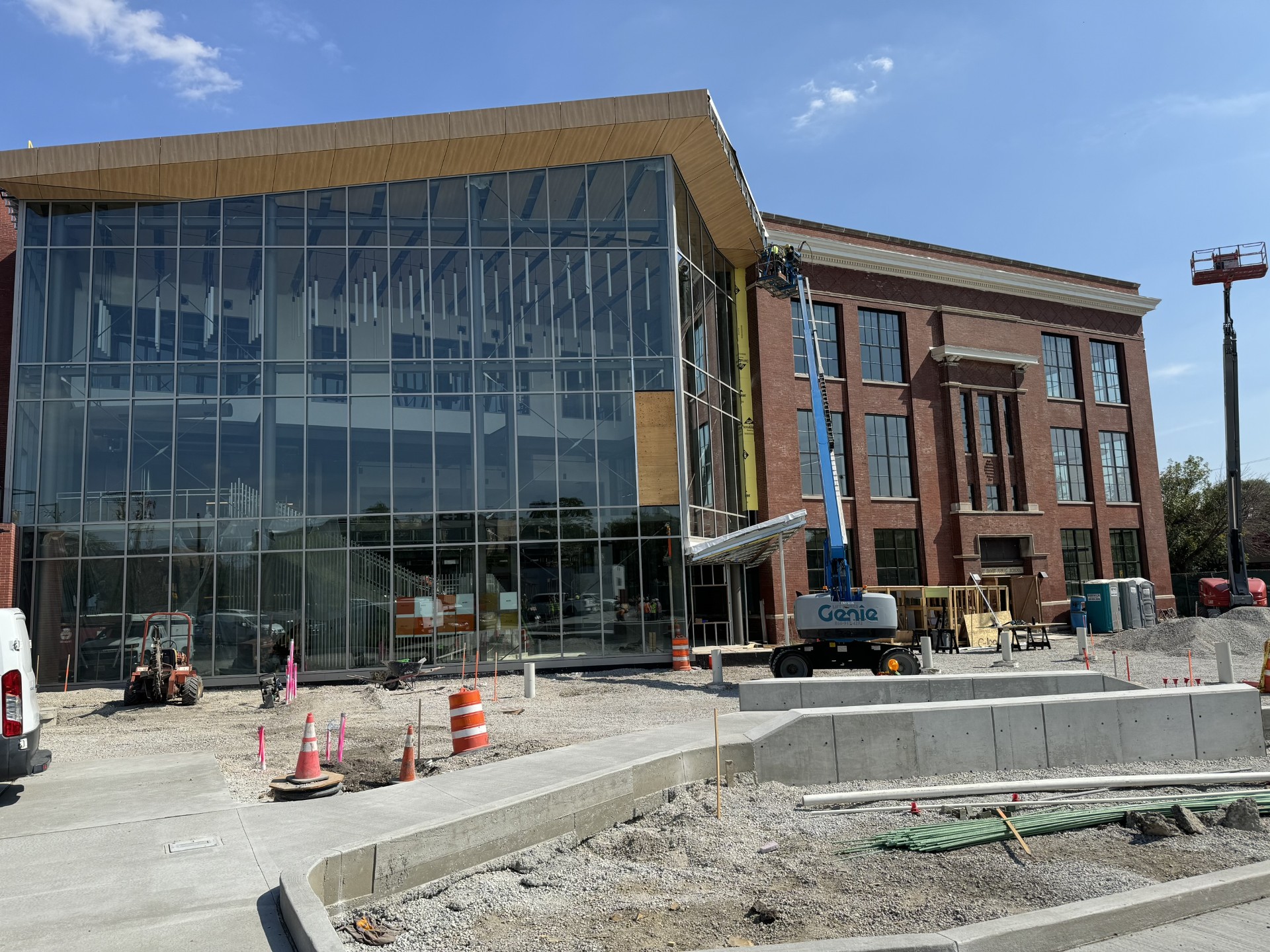
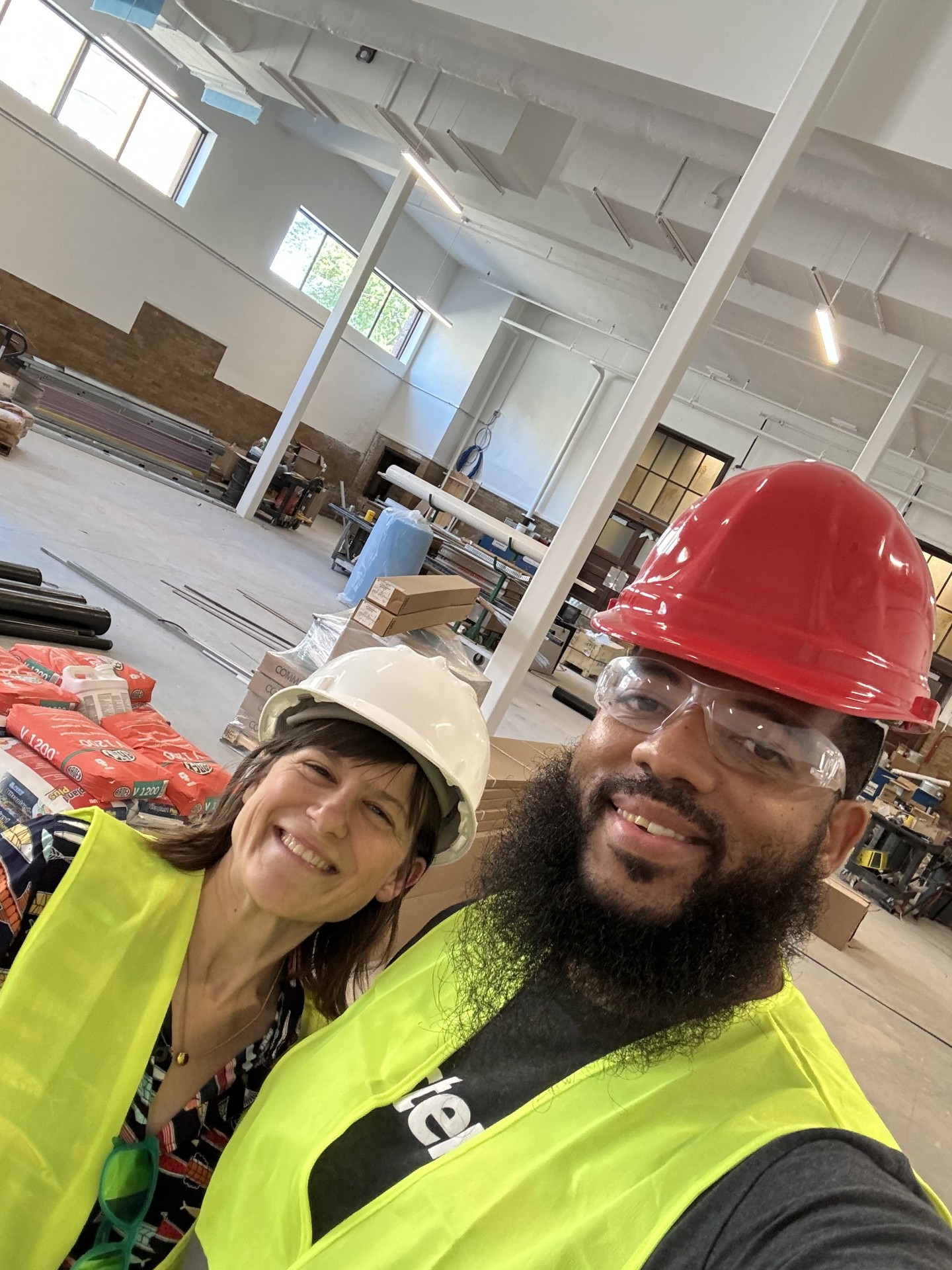
On June 19th, 2025, JARC will relocate its headquarters to the new Aspire Center in Chicago’s Austin neighborhood, a move that will significantly enhance its impact on the community. The Aspire Center is a joint effort by the Westside Health Authority and Austin Coming Together, to convert a vacant building which formerly housed an elementary school (Emmett Public School, at 5500 W. Madison), into a hub of organizations dedicated to education, health, and community development.
Darnell Shields, executive director of Austin Coming Together and board member at JARC, expressed his excitement about the new Aspire Center, saying, “This is sending a message to our community to let them know that they are valuable, and their lives do mean something, and they can be whatever it is they aspire to become.”
”“In essence, the Aspire Center, with JARC’s involvement, is intended to be a hub that provides Austin residents with the tools and support they need to thrive, contributing to a more prosperous and equitable community,” he explained.
Adonis SummervilleJARC’s Director of Advanced Manufacturing
In keeping with the organization’s mission of ensuring working people do not live in poverty, JARC has been focusing on Chicago’s West Side – an area with a high rate of poverty and unemployment – for over a decade. In fact, 20% of JARC’s trainees have come to us from the West Side. In the new space, JARC will be able to expand program offerings, invest in the most up-to-date equipment and enroll more students. Volunteers, staff, and trainees have expressed excitement and optimism regarding the move. Many come with a wealth of understanding of why JARC’s presence will be important for the community.
While manufacturing jobs represent the largest employment sector in Chicago, only 6% of Austin residents work in that sector. Adonis Summerville, Director of Advanced Manufacturing, grew up in the Austin neighborhood.
The new location at the Aspire Center will offer Computer Numerical Control (CNC) and Manufacturing Bridge programs. There are also plans to potentially offer a new robotics program. With 7,040 square feet of manufacturing, classroom, and office space, JARC will be able to better serve the West Side by offering more opportunities to more individuals hoping to establish careers in the manufacturing industry.
Contact: Andrea Tovar, Director of Marketing & Communications – JARC
Phone: (773) 751-7120
Email: andreat@jane-addams.org
Emily Doherty, Vice President of client services at JARC, expressed her optimism for the potential impact the organization’s presence would have on the Austin neighborhood for generations to come. “Workforce development doesn’t just result in employment,” she said. “It results in homeownership, higher education for future generations, and lifting families out of poverty.” Emily and the rest of the team at JARC look forward to the Aspire Center’s grand opening. For more information, follow JARC on social media @jarctraining, and consider donating to our efforts at https://jarctraining.org/donation/.
RSVP Required for the Grand Opening: http://bit.ly/3ZiCzq5
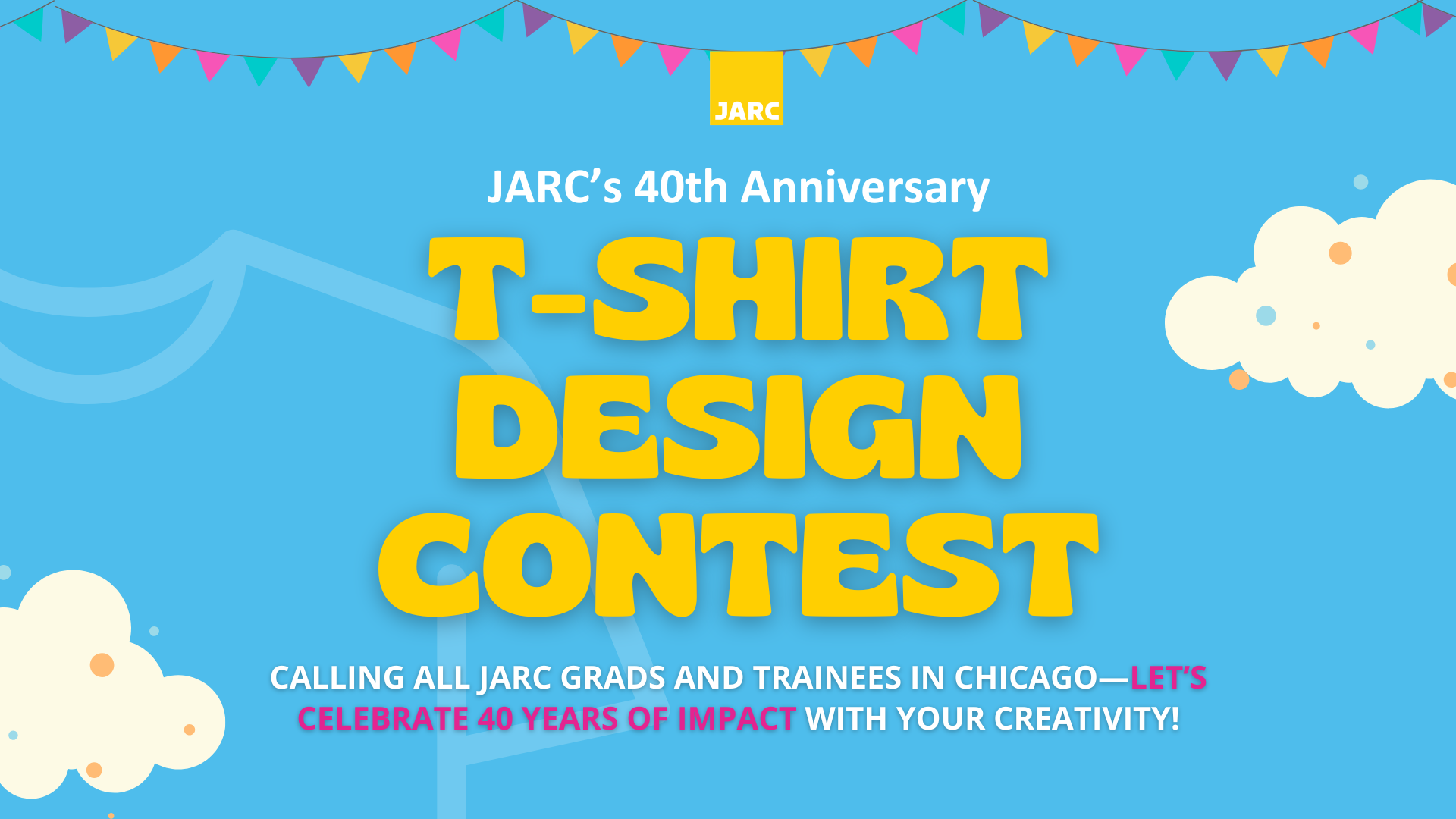

JARC is turning 40 in 2025, and we’re celebrating with a year-long t-shirt fundraiser—but we need YOUR creativity to make it happen! We’re inviting graduates and current trainees to submit original t-shirt designs that capture their experience at JARC and reflect the impact of our programs.
Three winning designs will be chosen, printed, and sold throughout 2025 to help support JARC’s mission. Plus, winners will receive $50 Gift card each and get featured in our campaign!
📅 Contest Opens: April 15, 2025
⏳ Deadline to Submit: May 10, 2025
🏆 Winners Announced: May 16, 2025
✔️ Create an original t-shirt design that represents your experience at JARC and incorporates the theme of JARC’s 40th Anniversary.
✔️ Submit your design in a high-resolution digital format (PNG, JPEG, or PDF) to andreat@jane-addams.org
✔️ Make sure your design is print-friendly and works well on a t-shirt.
Judging Criteria
A panel of JARC staff and Associate Board will select the winners based on:
🎨 Creativity & Originality – Unique, eye-catching designs that stand out.
💡 Relevance to JARC – How well the design reflects the JARC experience and our 40-year legacy.
👕 T-Shirt Compatibility – How well the design translates to a wearable, printed t-shirt.
📢 Fundraising Potential – Designs that inspire and engage supporters to wear and promote JARC’s mission.
Winner Perks
🏅 Your design will be printed and sold in our year-long fundraiser!
📸 Winners must be available for a photoshoot with their t-shirt once printed.
🎁 Plus, receive a $50 gift card for your creativity and effort!
This contest is only valid for JARC trainees and graduates in the Chicago area.
This initiative is organized by the JARC’s Associate Board.
Recent Comments